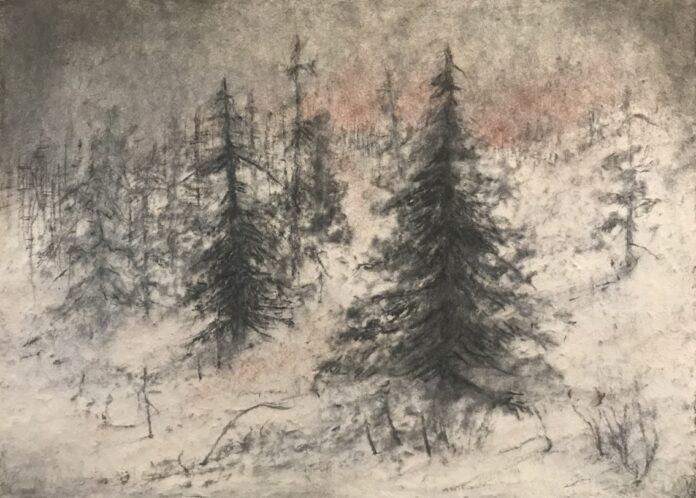BY LESLIE REGO

A couple of weeks ago I wrote about an early morning that unfolded clear and bright—the crimson color of the snow glistened and the air crackled. I described the reflective quality of snow causing the surface planes to take on the color of the sky or the surrounding areas. This morning, I once again see a crimson sky but today the atmosphere is different. It is a moody and misty day. The shimmering magentas of the other day, made brighter by a new snowfall, have turned into subdued and delicate shades of pink.
Added to the muted quality of the daybreak is a landscape that is no longer pristine white, but rather bears witness to the ravages that come with age. It would be a stretch to call the snow pure. Broken leaves, twigs and branches lie everywhere, replicating an old threadbare, tattered and patched quilt that has survived through time and still continues to be loved.
And yet it is still a mystical world out there. The shades of pink, significantly greyed down, take on a vintage quality similar to the daguerreotype photography of the 1800s when every daguerreotype was unique, printed on a silvered copper plate, and exposed in a large box camera. The surface of the print was very delicate. Even the lightest touch could permanently abrade the image. Some tarnish around the outside perimeter was normal, causing the old photographs to have irregular feathered edges.
In the misty morning air the snow seems fragile. An animal track or a slight breeze can easily scuff the surface. Gentle wisps of vapor rise over the land extending into the edges of my view. The fog descends and captures the corners of the panorama, making the borders to my view seem a bit tarnished. The pinks still glow through the center of the landscape, gently transporting me to another era.
Leslie Rego is an Idaho Press Club award-winning columnist, artist and Blaine County resident. To view more of Rego’s art, visit leslierego.com.



